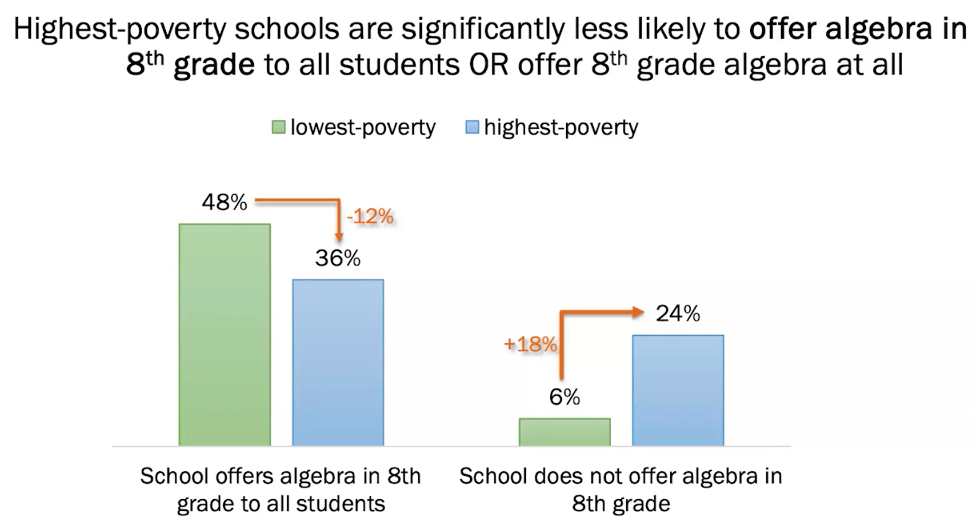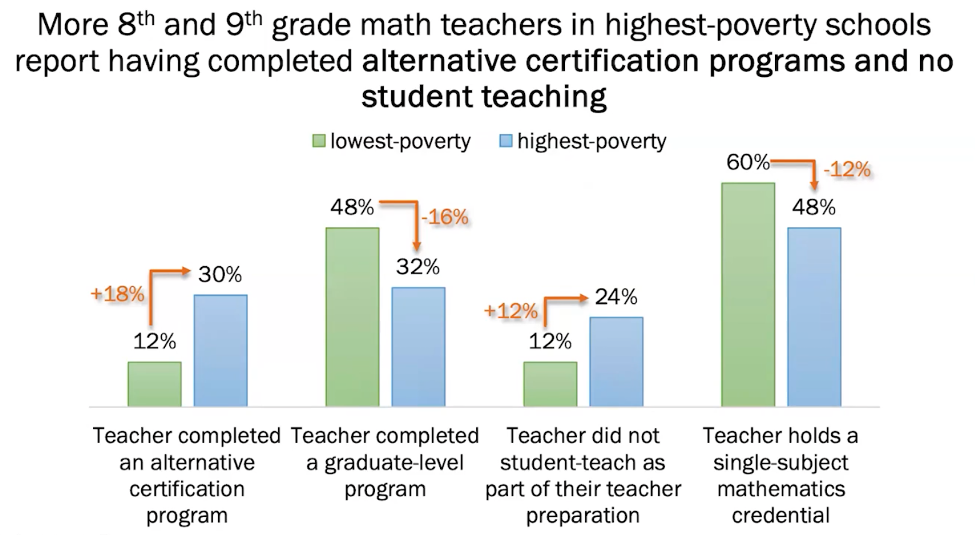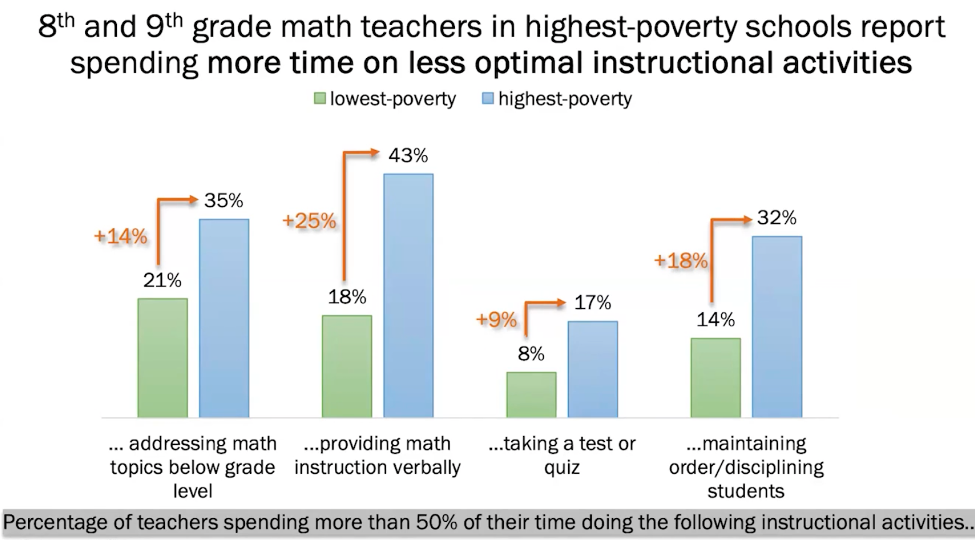Conversely, poor schools are much less likely to adopt an algebra-for-all policy for eighth graders. Nearly half of the wealthiest schools offered algebra to all of their eighth grade students, compared to about a third of the poorest schools.

Math teachers at high-poverty schools tended to have weaker professional preparation. They were far more likely to have entered the profession without first earning a traditional education degree at a college or university, instead completing an alternative certification program on the job, often without student teaching under supervision. And they were less likely to have a graduate degree or hold a mathematics credential.

In surveys, a third of math teachers at high-poverty schools reported that they spent more than half of class time teaching topics that were below grade level, as well as managing student behavior and disciplining students. Lecture-style instruction, as opposed to classroom discussion, was far more common at the poorest schools compared to the wealthiest schools. RAND researchers also detected similar discrepancies in instructional patterns when they examined schools along racial and ethnic lines, with Black and Hispanic students receiving “less optimal” instruction than white students. But these discrepancies were stronger by income than by race, suggesting that poverty may be a bigger factor than bias.

Many communities have tried putting more eighth graders into algebra classes, but that has sometimes left unprepared students worse off. “Simply giving them an eighth grade algebra course is not a magic bullet,” said AIR’s Goldhaber, who commented on the RAND analysis during a Nov. 5 webinar. Either the material is too challenging and the students fail or the course was “algebra” in name only and didn’t really cover the content. And without a college preparatory track of advanced math classes to take after algebra, the benefits of taking Algebra 1 in eighth grade are unlikely to accrue.
It’s also not economically practical for many low-income middle schools to offer an Algebra 1 course when only a handful of students are advanced enough to take it. A teacher would have to be hired even for a few students and those resources might be more effectively spent on something else that would benefit more students. That puts the most advanced students at low-income schools at a particular disadvantage. “It’s a difficult issue for schools to tackle on their own,” said Goldhaber.
Improving math teacher quality at the poorest schools is a critical first step. Some researchers have suggested paying strong math teachers more to work at high-poverty schools, but that would also require the renegotiation of union contracts in many cities. And, even with financial incentives, there is a shortage of math teachers.
For students, AIR’s Goldhaber argues the time to intervene in math is in elementary school to make sure more low-income students have strong basic math skills. “Do it before middle school,” said Goldhaber. “For many students, middle school is too late.”
This story about eighth grade math was written by Jill Barshay and produced by The Hechinger Report, a nonprofit, independent news organization focused on inequality and innovation in education. Sign up for Proof Points and other Hechinger newsletters.




